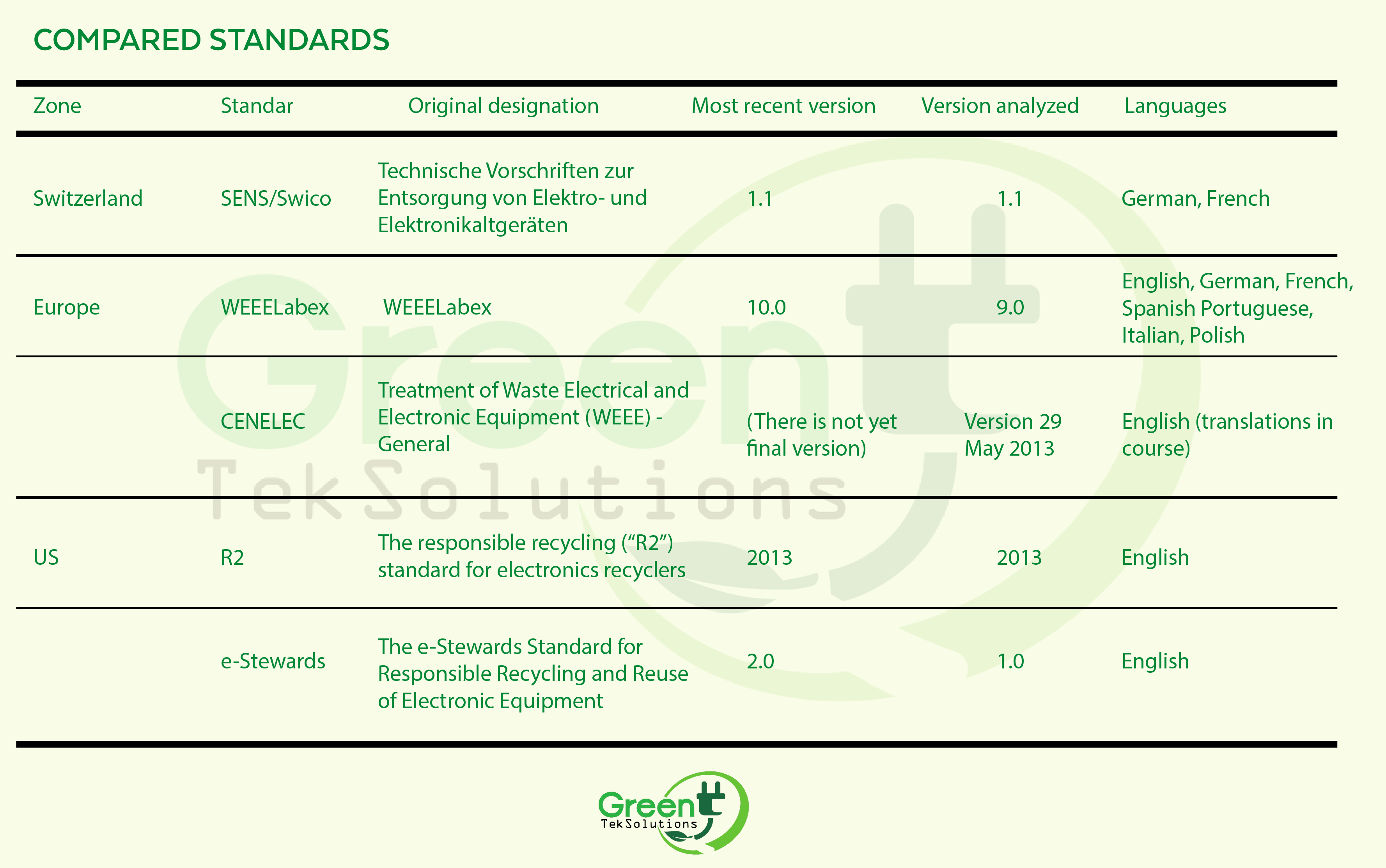Below we will show you the comparison of international technical and environmental standards for the treatment of WEEE
Switzerland
The Swico / SENS standard is the official standard of Switzerland and entered into force on December 8, 2009. Although it is a standard created at the initiative of the private sector, it was declared by the Swiss Ministry of Environment as a state of art and as such It is mandatory for WEEE recycling companies operating in Switzerland. The standard complements and details the existing legal framework and consists of two parts: the general technical directives and the specific directives for six different types of devices.
Europe
WEEELabex (WEEE Label of Excellence) is a European standard created between 2009 and 2012 within the framework of a project co-financed by LIFE +, the European Union's environmental program. The standard in its first version was based on the Swiss Swico / Sens standard and the approved version has no major differences from the Swiss standard. The organization responsible for the implementation of WEEELabex is currently the "Weee Forum Association". The standard is available in 7 languages, and consists of three documents: collection, logistics and treatment. The standard on treatment also includes extended annexes.
The CENELEC standard (European Committee for Electrotechnical Standardization) is based on the WEEELabex standard. Therefore, the two standards, although similar, contain some significant differences. In addition, while WEEELabex is voluntary, CENELEC is expected to become a “European standard†(EN) and therefore it is planned to declare it as binding in the next revision of the European WEEE directive. Therefore and given this commitment, the national laws of each European country should consider the Cenelec standard as binding as well.
U.S
The R2 was designed by the EPA (Environmental Protection Agency) of the United States. Although this standard is voluntary, most of the WEEE management programs in that country require it. It is characterized by the fact that operators (managers) from anywhere in the world can be certified.
The first version was published in 2008 and as of March 2014 there were 511 certified operators in 17 countries - more than any other standard. In Latin America there are certified operators in Mexico, Costa Rica and Brazil.
The e-Stewards standard was created by the NGO BAN (Basel Action Network). The NGOs originally involved in the design of the R2 did not agree with some directives (particularly the export directives) and as no agreement was reached, they left the R2 and started the e-Stewards project.
Therefore, e-Stewards is more restrictive than R2, particularly in the areas of exports and health.


